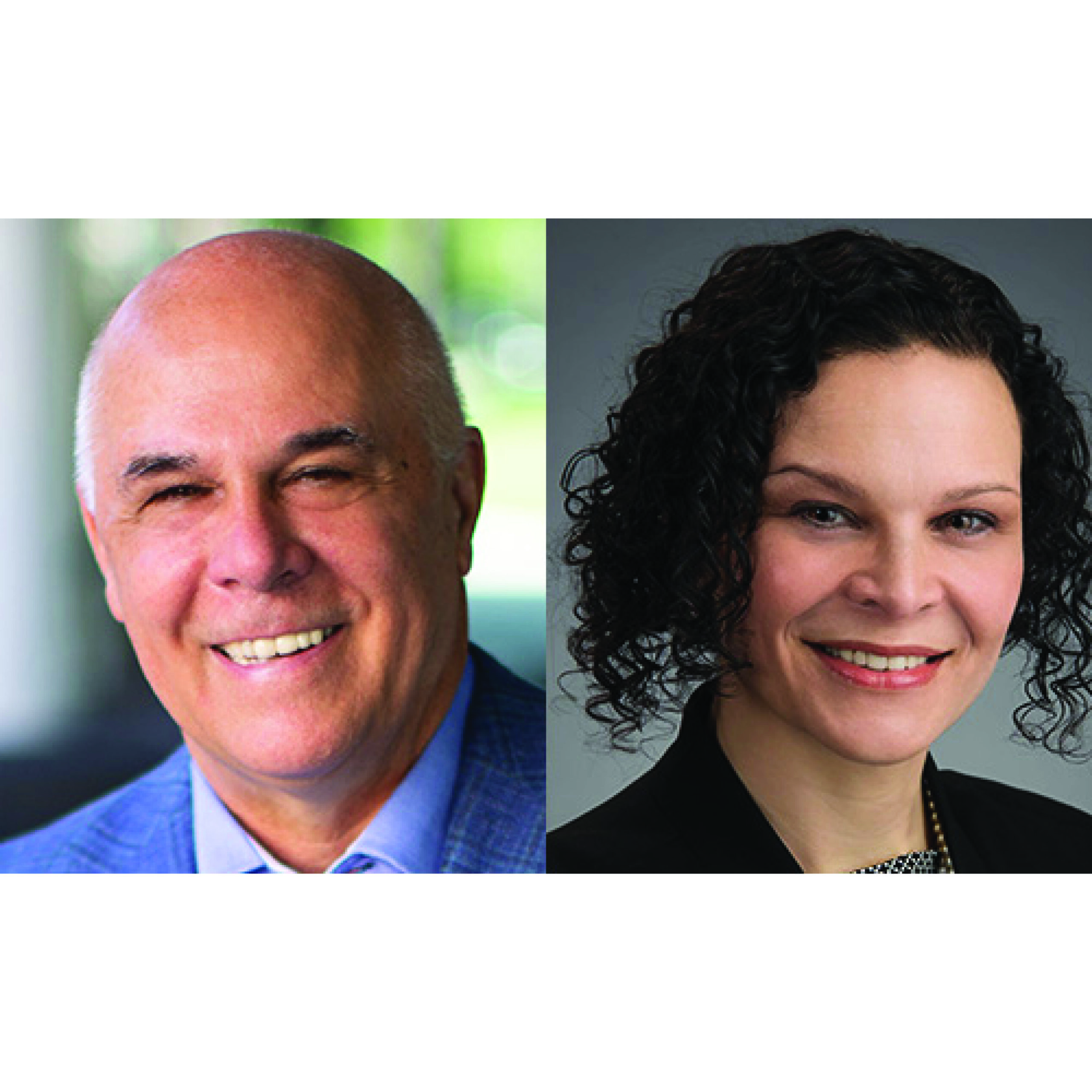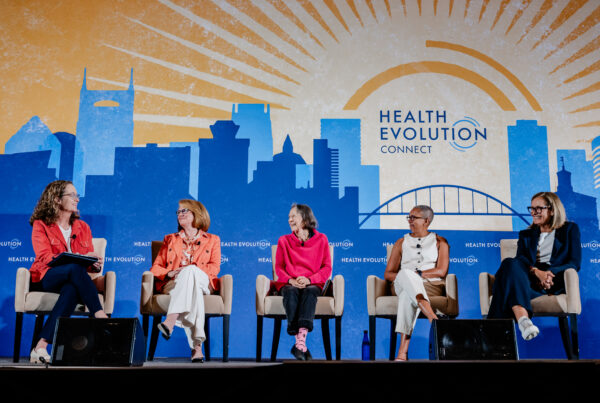The United States is grappling with a mental and behavioral health care crisis. In recent years, we’ve seen significant growth in mental and behavioral health needs, which has placed increased strain on the country’s already inadequate mental and behavioral health care infrastructure. A recent Kaiser Family Foundation (KFF)/CNN mental health survey found that 27% of adult respondents reported there was a time in the 12 months leading up to the survey when they thought they needed mental health services or medication but did not receive them.
Studies also show there are severe disparities in prevalence of mental and behavioral health conditions and access to care among certain populations. For example, research conducted by the CDC has found racial and ethnic disparities in reported prevalence of stress and worry, mental health conditions, and suicide rates. In addition, the KFF/CNN mental health survey found that, among respondents who identified as LGBTQ, 51% reported needing but not accessing mental health care in the 12 months prior to the survey, compared with 24% of respondents who did not identify as LGBTQ. And further, the U.S. Surgeon General’s 2021 Advisory “Protecting Youth Mental Health” showed that mental health challenges represent a growing crisis among children and youth in the United States, with feelings of sadness and hopelessness increasing by 40% among youth between 2009 and 2019 and disparities in rates of mental health conditions and suicide deaths between different racial and ethnic groups and income levels.
Health care leaders recognize this critical problem, and many organizations are launching initiatives aimed at reducing disparities in mental and behavioral health care. However, with need for these services so acute, it can be difficult for organizations to know where to start.
That’s why the Health Evolution Roundtable on Data-Driven Health Equity Strategies recently convened with supporters of Health Evolution’s Health Equity Pledge to discuss ways to identify and address mental and behavioral health disparities. Roundtable Co-Chair Pat Geraghty, President & CEO of GuideWell and Florida Blue, and Fellow Rachel Thornton, MD, PhD, Vice President and Chief Health Equity Officer at Nemours Children’s Health, shared how their organizations are leading in this space. Adam Myers, MD, SVP & Chief Clinical Transformation Officer at Blue Cross Blue Shield Association, who also is a Co-Chair of the Roundtable on Data-Driven Health Equity Strategies, moderated the discussion.
Three ways to start addressing mental and behavioral health inequities
Throughout the conversation, Geraghty and Thornton honed in on three ways organizations can get started in their efforts to identify and address mental and behavioral health disparities.
1. Work to reduce stigma
With increased media attention to mental and behavioral health, as well as the proliferation of new mental and behavioral health platforms throughout the COVID-19 pandemic, it can be easy to forget that considerable stigma to talking about and accessing mental and behavioral health services still exists. But in the KFF/CNN mental health survey, among respondents who said they’d needed mental health services in the 12 months leading up to the survey but did not get them, 20% reported that they were embarrassed or afraid to get care.
“We need a lot of stakeholders on board to really take down the stigma issue in mental health, so that we are not having artificial barriers to people getting care,” Geraghty said. He noted that GuideWell and Florida Blue look to reduce stigma not just through the organizations’ own efforts, but also by collaborating with others to promote mental and behavioral health. For example, the organizations helped launch Project Opioid across the state of Florida, which brings together community leaders to identify tangible solutions to eliminate the stigma associated with opioid use disorder and reduce opioid deaths.
Internally, GuideWell and Florida Blue have an employee resource group dedicated to mental well-being. The Mental Health Collaborate offers peer support for team members, which the organizations say has helped reduce stigma in the workplace.
Thornton said it’s important organizations create “a welcoming environment and a place that lifts people up in the face of challenges versus judging or stigmatizing.” At Nemours, the organization focuses on reducing stigma not only for its patients, but also for its patients’ families and caregivers.
“We need to ensure that this is a place where our patients feel comfortable to come back, not just for physical health care, but also to talk about concerns related to anxiety or depression or other mental and behavioral health concerns,” Thornton said.
2. Collect baseline data
Organizations often feel as if they don’t have the data needed to identify inequities and launch targeted solutions. Health Evolution recently conducted a survey of our Health Equity Pledge supporters to gather insights about demographic data capture and experiences in addressing mental and behavioral health disparities. The survey showed there is opportunity to increase measurement and identification of which mental and behavioral health disparities may be occurring across race, ethnicity, language, sex, sexual orientation, and gender identity.
But that doesn’t mean organizations can’t act, Geraghty said. “I think we can take action without waiting for perfect data,” he noted.
Thornton and Geraghty agreed that starting to analyze the data organizations already have is a good place to start.
Thornton noted that beginning to collect and analyze data is key to constructing a baseline for further evaluation and action. She said participating in surveys through the Health Equity Pledge has helped Nemours “elevate the critical building blocks and points of infrastructure” that they need “to effectively stratify data across different dashboards and clinical and process indicators.” At Nemours, that stratification helps the organization “have confidence that, in every dashboard, ways of grouping patients into categories to identify disparities are consistent and standardized,” so Nemours can ensure patients’ needs are met across its spectrum of care and services.
Nemours also is “very dedicated to and focused on screening patients and families for social needs,” and the organization “completed more than 50,000 social needs screenings in 2022,” Thornton said. Nemours uses the data it collects to “identify opportunities before us” and “address both processes of care and outcomes,” as well as “to support whole child health and further advocate for the types of service delivery models that we need to expand to be able to meet the needs of our patients,” she explained.
Geraghty noted that GuideWell and Florida Blue use the Harvard Flourishing measures to “define” how the organizations “look at the issues that are happening in our communities.” He added that GuideWell and Florida Blue collect data on these measures themselves and assist partners in collecting and reporting data that can help to identify areas of need. “We make sure that partner organizations are aligned with us on the data collection … so that we have the best information we can have to be actionable as we move forward,” he said.
3. Identify and partner with organizations that have shared goals
Geraghty noted that partnering with other entities working to address mental and behavioral health disparities could help organizations start to make an impact without having to manage every aspect of the effort on their own. “You can find legitimate partners who are doing good work, and you can combine efforts among your organizations to take on the issue,” he said.
Geraghty suggested that organizations look for partners who can reach patients in ways they cannot. For example, Geraghty pointed to GuideWell and Florida Blue’s partnership with Guitars Over Guns. “It’s an organization that uses music—the writing of music and the performing of music—to engage teenagers who would otherwise be stigmatized if they were getting therapy. But they’re actually getting therapy while they’re learning to write music where they can express a lot of the issues they’re dealing with. They then create a peer group, and they’re receiving counseling as they’re going through this process,” he said.
Geraghty also noted that GuideWell and Florida Blue in 2020 committed $25 million in investments over five years to address racial injustice and health inequities in Black communities, and a portion of that funding has been dedicated to mental health. According to Geraghty, GuideWell and Florida Blue last year gave a total of about $3.5 million to 11 different organizations in the mental health space to help “advance their work in underserved communities.”
“We know we need partners,” Geraghty said, “and those partners need to be on the front line based in our communities. We’re partnering with them to fulfill the gaps.”
Nemours also leverages partnerships to expand their reach in offering mental and behavioral health services. “We’re really in a crisis in terms of children’s mental and behavioral health, and that continues to spur our work not only in clinical delivery, but also in partnerships in communities, in school-based health centers, with our colleagues in government, and with our payer partners,” Thornton said.
Through those partnerships, Nemours focuses on creating interdisciplinary care teams, ensuring payment parity for mental and behavioral health care, and advocating for policy changes to address mental and behavioral health access and inequities.
Nemours strives to create “a whole child health model, which is really about aligning providers, payers, and community-based organizations, as well as multi-sector stakeholders, around improving population health and addressing social determinants needs in communities,” Thornton said. She cited as an example Nemours’ Whole Child Health Alliance, which brings together various industry and community-focused organizations to advance whole child health models. “It really starts with bringing together all of those constituencies in your local community who have the ability to impact and touch” patients, Thornton said.
Health Equity Pledge
As a response to this challenge of addressing health disparities, the Health Evolution Forum has launched the Health Equity Pledge to meaningfully strengthen data foundations through the collection, stratification, and review of race, ethnicity, language, and sex data, with the ultimate goal to more effectively identify disparities, diagnose root causes, and instill accountability for eliminating them.
These actions, structured into three Pledge objectives, are a significant opportunity to embed equity into quality improvement and interventions across the health care industry, and to reduce disparities in care delivery, the patient and member experience, and outcomes.
To date, more than 50 health care organizations have signed the Pledge.
Learn more about the Health Equity Pledge.
Thank you to our Health Evolution Community and Partners
Health Evolution would like to thank members of our Roundtable on Data-Driven Health Equity Strategies and our Health Equity Pledge supporters for contributing to this work.
Health Evolution also would like to thank AmeriHealthCaritas, Optum, and MetaCX for their partnership in supporting this work.
![]()
![]()
![]()










